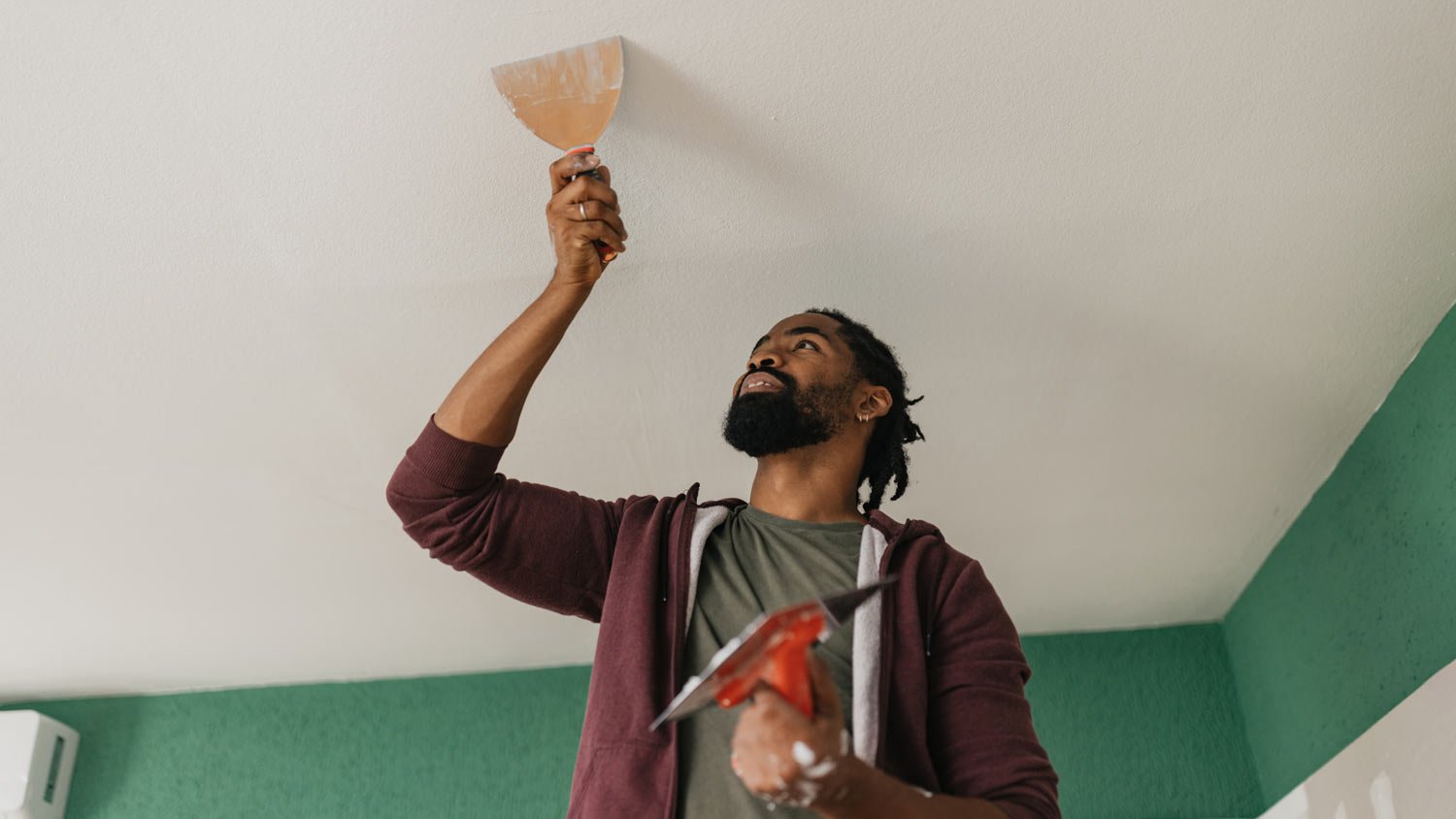What Is a Colonial-Style House and Is It Right for You?
From its symmetrical exterior to a traditional floor plan, this is a popular home choice


Colonial-style homes date back to the 1600s.
The first version was made of logs and had a fireplace.
Its more traditional design is thanks to various European colonists.
There are six main types of colonial homes.
While it has great resale value, its stairs might be problematic for some families.
Between the 17th and 19th centuries, wave after wave of settlers brought their home architectural styles to the states—or soon-to-be states. While American Colonial-style houses came over with the British, similar styles developed from the Spanish, Dutch, and French over the next several hundred years.
If you're considering buying a home with this signature look, there are some key things to know about the Colonial style.
History of Colonial-Style Homes
The American Colonial-style homes can be traced back to the 1600s when the colonies were under British rule. With people from Britain, France, Spain, and the Netherlands, each group brought architectural styles from their homeland. The result was the traditional homes we see today. However, their first versions differed slightly and were made from tree logs, with one room and a fireplace inside.
What Do Colonial Homes Look Like?

Drive down any suburban street around Boston, and you're bound to see an American Colonial home. The houses are nearly symmetrical at first glance: They typically feature wood, brick, or stone siding, symmetrical windows, and a door front and center.
The roof pitches steeply down and may feature deep eaves, one or more gables, and windows with overhanging dormers. Step inside, and you'll likely encounter a sprawling staircase headed up to the second floor right in the center of the house.
Other Colonial homes, while similar (like the Federal style homes post-revolution), include a range of unique accents and building materials depending on who built them and when or where they first appeared. The style even made a comeback in the late 19th and early 20th centuries.
Here's a quick rundown of how to spot most Colonial-style houses:
Exterior
The outside of a Colonial home ranges from country-rustic to regal and stately.
Two or three stories
Symmetrical facade (symmetrical windows, for example)
Multi-paned windows
Center front door
Steep roofs
May have gables
Siding is brick, stone, or wood
Centralized or alternate-ended chimneys
Interior
Nearly all colonial homes keep a traditional floor plan with even space on either side of the staircase.
Symmetrical floor plans and room layout
Staircase in the center of the home
Kitchen, living room, and dining room downstairs
Bedrooms upstairs
Fireplace in the center or at either end of the home
What Are the Main Types of Colonial Homes?

As mentioned, Colonial homes developed as more people moved to the U.S. over the centuries. If you're looking to buy a new home, take on the cost to build a house, or are simply passionate about Colonial architecture, remember these unique details about each style.
American Colonial (British or English Colonial)
Depending on when it was built, American Colonial homes range anywhere from large Lincoln Log cabins to the house from the book Little Women. Primarily, these early homes have a:
Wooden facade
Rectangular shape
Sloped roof (some in the saltbox style sloping forwards)
Set of symmetrical windows
Cape Cod Colonial
The iconic look of a Massachusetts home (hence the name), the Cape Cod Colonial typically has a sloped, saltbox roof. This term comes from the shape of Colonial salt containers. These homes also include:
Two and three stories
Top story ceilings slant with the shape of the saltbox roof
Symmetrical windows
Wood siding
Cables or dormers over the windows
Dutch Colonial
If you're from the tri-state area, you'll recognize this style in a heartbeat. Typically featuring what is known as a gambrel roof, the barn-like top of the house splits down the middle with a steep slope on either side. Dutch Colonials:
Symmetrical
Rectangular or topped with a triangle roof
Include a center or off-center door
May feature columns, outdoor porch, or prominent exterior chimney
Spanish Colonial
Head out west or deep into sunny Florida and Spanish Colonials become the style of choice. White stone walls, clay roofs, and wooden accents make it easy to distinguish. Overall, the style is:
Minimalistic indoors and out
May include colorful tile, brass, or wooden accents
Small windows
May feature rounded doorways and window frames
French Colonial
French-style homes are most common in the South, particularly in areas such as New Orleans. While wooden siding is the most common choice in older homes, you may see stone in modern revivals. French colonials typically have:
Multiple, symmetrical columns
Large porches
Large windows across front and sides
Tall gabled windows
Highly-sloped roof
Colonial Revival
Blend all of these classic home styles together and you get the range of Colonial revival homes built between the late 19th century and today.
Depending on the architect's preference, you may find a quaint suburban home with wooden siding, symmetrical windows, and a sloped roof. In more elaborate cases, large mansions may feature towering columns, tall gables, or elaborate entranceways.
Pros and Cons of Colonial-Style Homes
Colonial-style homes come in various styles, so you’re bound to find one that suits you. However, its traditional style has advantages and drawbacks that you should know. We’ll cover them below.
Pros
Let’s look at some of the benefits of Colonial-style homes.
Classic Aesthetic
You can’t go wrong with the classic look of a Colonial home. Its style has been around for centuries. So it's easily one of the first designs someone thinks about when you say ‘traditional home.’ Plus, some of its common interior elements, like a fireplace and staircase, give the impression of a cozy, warm home. And who doesn’t like cozy?
Simplistic Layout
Typically, colonial homes have a symmetrical interior and exterior type of floor plan. While simplistic, it also has a functional layout that can make your home feel in order. Besides that, they’re also a blank canvas you can customize to align with your needs.
Resale Value
Since these homes are more traditional and have great curb appeal, they can also have a high resale value. Buyers love traditional, spacious homes that they can customize to fit their needs. Besides the interior, the exterior curb appeal (that these homes have plenty of) can heighten interested parties’ desire, allowing you to sell it for a higher price.
Cons
Let’s look at some common issues of most Colonials.
Stairs Can be a Safety Hazard
While second-story homes mean more interior space, it’s not always the safest option. If you live with young children or a person with mobility impairments, staircases, common in Colonials, can pose a potential safety hazard. As a solution, you can install baby gates to prevent toddlers from wandering upstairs. Also, keep essential rooms easily accessible on the first floor to accommodate mobility needs.
Over-Sized Homes
Most traditional Colonial homes are large, with at least two stories. If you want less square footage or to stay within your budget, these homes can clash with your needs. While larger homes aren’t the only type of Colonials, they are the vast majority.
Lots of Walls
One of the downsides of older Colonial houses is they have walls throughout. There’s nothing wrong with a wall or two, but too many walls can make a space feel closed off and confined. However, there are modern Colonials that have open floor plans if walls are a concern for you.
Where Will You Find Colonial Homes?
If you recall middle school American history, you can take a guess where each style of Colonial home resides. "American" Colonial homes—traditionally brought over from England—pop up around the Northeast and in the South. You typically won't find an early Colonial style west of the Mississippi.
Dutch Colonials can be found throughout the same region, but are more concentrated in the suburbs of New Jersey, Connecticut, and Pennsylvania. French Colonial homes are more common in the South, though you'll spot them in the midwest as well. Spanish Colonials—perhaps the most unique on this list—appear in the Southwest, Florida, and California.
Lastly, you'll come across Colonial revivals all over the country. As the style took off, luxury variations of the style melded with local architecture from coast to coast.
Choosing a Home Style
If you're just starting your hunt for a new home or plan on working with a local architect for a new space, these classic styles provide inspiration from the U.S.’s past. Similar styles, like Georgian-style homes and Chalet-style homes, offer even more architectural accents from around the world.
In the end, it all comes down to choosing a space that reflects your personal style and welcomes you home at the end of the day.
The exterior Colonial colors are earthy greens, neutrals, blacks, blues, peaches, pinks, and white. Of course, some of these shades weren’t as popular when colonial-style homes had one purpose—shelter. However, they grew in popularity over the centuries and are now used to add a timeless depth to more modern homes.
Yes, Colonial homes are generally a good investment. Most home buyers who are interested in this style love its simple yet functional interior and charming exterior. Plus, if you keep up with its maintenance, some homebuyers are more willing to purchase a traditional home without the common issues found in older homes.















